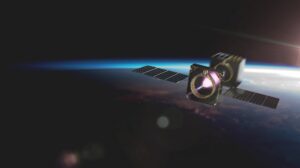4 statement, Momentus said the flight of its first Vigoride tug, which was to be part of the payloads on a Falcon 9 dedicated rideshare mission launching as soon as Jan. 14, will be delayed to later in the year because it was unable to get approval from the Federal Aviation Administration for the mission.
“This move will allow for the additional time necessary to secure FAA approval of Momentus’ payloads, including completion of a standard interagency review,” the company said in a statement.
The company did not elaborate on that review, but part of the FAA commercial launch licensing process is a review of the payload that the agency describes as intended “to determine whether its launch would jeopardize public health and safety, safety of property, U.S. national security or foreign policy interests, or international obligations of the United States.” That process can include consultation with other government agencies.
In a Jan. 5 document filed with the Securities and Exchange Commission in the form of an interview, Fred Kennedy, president of Momentus, said there was no specific issue that was delaying that review. “The FAA did not express any specific concerns of its own, but rather indicated that more time was needed to complete its interagency review of Momentus’ payload,” he said.
He added that the company had completed interagency reviews for other licenses it needs, such as one from the National Oceanic and Atmospheric Administration, which licenses a camera on the Vigoride vehicle as part of commercial remote sensing regulations. Kennedy said Momentus “recently cleared an interagency review” for that license, and NOAA’s website lists Momentus among the companies that have a commercial remote sensing license.
Momentus did not disclose in its announcement the payloads on the mission, known as Vigoride-1 or VR-1. However, in a Federal Communications Commission filing in June, the company said the vehicle would carry five cubesats, ranging in size from 1.8 to 4.4 kilograms each, from Aurora Propulsion Technologies, SatRevolution, SpaceManic and Steamjet Space Systems.
In the FCC filing, Momentus said that Vigoride-1 would be released from the Falcon 9’s upper stage in a sun-synchronous orbit at an altitude of about 525 kilometers. Vigoride-1 would then use its onboard propulsion to raise its orbit to 570 kilometers, then deploy the payloads. Vigoride-1 would then perform a deorbit maneuver to decrease its perigee to as low as 300 kilometers, enabling a reentry within a year. Without the deorbit maneuver, it would remain in orbit for up to 16 years.
One of those customers said they would continue to work with Momentus despite the delay. “We remain committed to Momentus’ value-add transport and service platform,” said Grzegorz Zwolinski, chief executive and co-founder of SatRevolution, in the Momentus statement about the Vigoride-1 delay.
Momentus said the delay in the Vigoride-1 launch would not affect its financial projections for the year. In an investor presentation filed with the SEC Dec. 14, the company projected revenues of $20 million in 2021, but a loss of $46 million for the year.
That presentation was filed as part of a planned merger between Momentus and Stable Road Acquisition Corporation, a special-purpose acquisition company, announced in October. That merger would turn Momentus into a publicly traded company with an estimated valuation of $1.2 billion and with $310 million in cash.
The company said that the merger is still scheduled to close in the first quarter of this year, pending approval by shareholders and other regulatory approvals.
Vigoride-1 was scheduled to be part of the payloads of a Falcon 9 mission called Transporter-1 by SpaceX, the first in a series of dedicated rideshare missions. The mission is expected to carry several dozen smallsats, although SpaceX has not published a roster of payloads.
That list of payloads remains in flux after two Defense Advanced Research Projects Agency satellites that were to fly on the mission were damaged in pre-launch preparations. The satellites, named Mandrake 1 and Mandrake 2, were to test advanced technologies DARPA plans to implement on future Blackjack satellites.
SpaceX is also seeking to add Starlink satellites to the Transporter-1 launch. In a Jan. 5 FCC filing, SpaceX disclosed it held a conversation with FCC officials the previous day stating that it plans to fly 10 Starlink satellites on the mission if it receives FCC authorization to do so. SpaceX, in recent FCC filings, sought permission to launch Starlink satellites into a polar orbit on an undisclosed “upcoming polar launch availability.”



